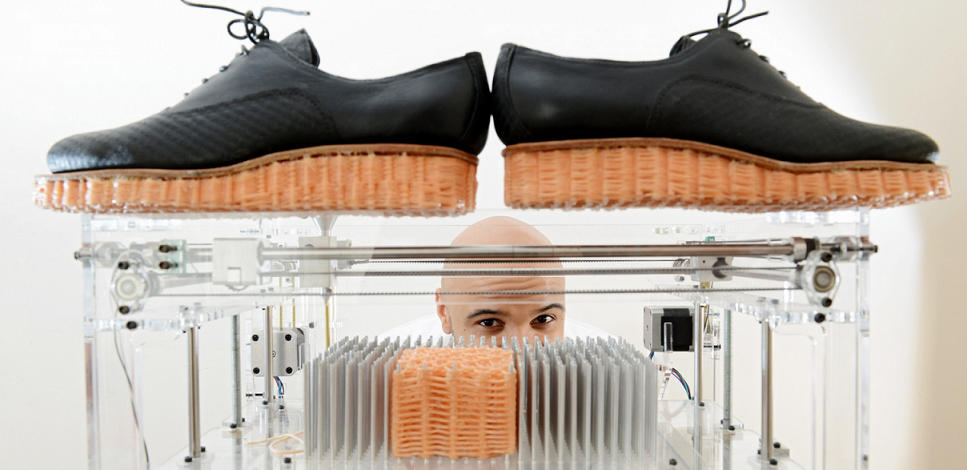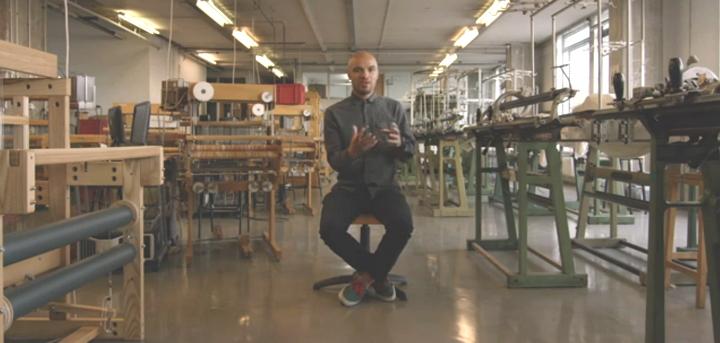Oluwaseyi Sosanya is a designer and engineer who currently calls London home. Sosanya, a graduate in Innovation Design Engineering from The Royal College of Arts and Imperial College London, works on connecting high-quality materials with high-tech processes.
Sosanya says his weaving method is an ideal fusion of the ancient and the now.
“We’ve been using the same sort of weaving techniques for thousands of years. This shirt that I am wearing right now is woven in the same way as a shirt that was made 3,000 years ago,” Sosanya says.
He began by consulting expert weavers in English textile mills who helped him gain a complete understanding of the traditional ways cloth is woven into yarns, and the concept of “warp and weft.” In fact we covered his incredible new method of printing back in June of last year. But now Sosanya wants to expands on the possible applications for the device.
Once Sosanya was satisfied that he had a grasp of the classical underpinnings of the art, he employed his background in mechanical engineering and computer programming to build a 3D weaving machine which places yarn in layers to arrive at the 3D shapes he was looking to create.
The “warp” in the classic method is essentially replaced by the rigid tubes. His first examples of objects printed with the weaver were footwear.
“With this system you can pre-program the density. At the ball of your foot, you may want a denser material. Right at the arch of your foot, you might want a softer material. At the heel, you might want a denser material,” Sosanya told The Guardian. “The current method for doing that is using different densities of foam, cutting them up, getting a specialist to layer and gluing them on top of each other and making these custom insoles by hand which are really expensive. I could press a button on a machine after an algorithm which runs over the ball of your foot and the underside of your foot which tells me the where the densities and the stresses are and it is done in one go.”
Sosanya believes he can scale up the process and the device to build a wide variety of products and structures, and he says he’s already in discussions to do just that with a number of companies.
“I took a technology which is well established and well known, which is weaving, and a technology which is emerging [3D printing],” he said. “There is an intersection between these two technologies to achieve something which weaving has never done before.”
From Buildings to Bullet proof vests, Sosanya has his sights set on several interesting and very possible applications for his method of 3D printing. Can you envision any additional applications for Oluwaseyi Sosanya’s 3D weaving printer? Let us know in the 3D Weaving Printer forum thread on 3DPB.com.

